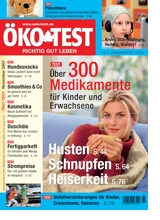| ||||||
|
While hazardous plasticizers and cancer causing azo dyes have long been banned by law, many of the cuddly toys tested were far from harmless – as they contained small parts. Even worse: Law does tolerate that! Of course, there are federal standards that prohibit small parts with toys for children under the age of three, but fibres are normally not considered “small parts”. And it’s exactly those tiny fibres that came loose at large during the Öko test. And little children naturally may swallow them as well.
Every toy launched to the European market has to comply with European Safety Standards EN 71. The EN 71 Standards state the requirements for toy safety, including organical, chemical, mechanical and physical requirements each product has to fulfil. As toys suffer wear and tear, they have to be safe even after “unorthodox treatment”. Manufacturers have to take “predictable misuse”, like licking or plucking, into account right from the start. Products that pass all EN 71 tests may bear the official CE mark.
Again and again plush toys are labelled “Warning! Not suitable for children under 3!”, although this sign was not designed for soft toys, as Gerhard Schönheiter from the Trade Supervisory Authority in Middle Franconia pointed out. According to European law, any toy with soft fillings and simple design for holding and cuddling has to be suitable for every age group. Small parts, laces and straps are simply not allowed – not even if you affix a warning. Manufacturers still considers themselves on the safe side with warning signs. But the truth is: If anything should accidentally happen, the manufacturers have to take the responsibility – with or without warning label. So Gerhard Schönheiter urges plush manufacturers to apply safety standards to all their products, even to those not intended for cuddling, such as key ring pendants. Nevertheless, this is still a legal grey area, even Schönreiter had to admit. The results The good news is: Eleven of twenty-four plush toys came off with “Outstanding” or “Above Average”. But now for the bad news: One stuffed animal had to be marked “insufficient” and seven toys even failed completely. Those seven cuddly animals should never be given to a child and not even be on the market. Due to the alarming results, ÖKO-Test bought more toys and carefully tested their mechanical and physical features for compliance with toy safety regulations, e.g. if they pose choking or strangulation hazards to children. What they found was a real disaster: another twelve toys should be withdrawn from the market immediately and never find their way into any child’s room – according to ÖKO-Test. Olaf Matthies, distributor of Ernie, was surprised that the puppet’s laces were longer than 22 centimetres. He knew they should not be. And he attributed those phosphoric compounds to some “contamination at the production site”. But he promised to pursue the question. Asked for the alarming DBT concentration in the Teletubbie Po, the manufacturer Hasbro announced that any child could eat “about 33.7 grams each day without worries – and that is a whole Teletubbie face”. But the fact is, that the Federal Institute for Risk Assessment in Berlin has “significant reservations” against the use of those very tin-organic compounds in toys. For a detailed overview of the test results visit Focus Online |




